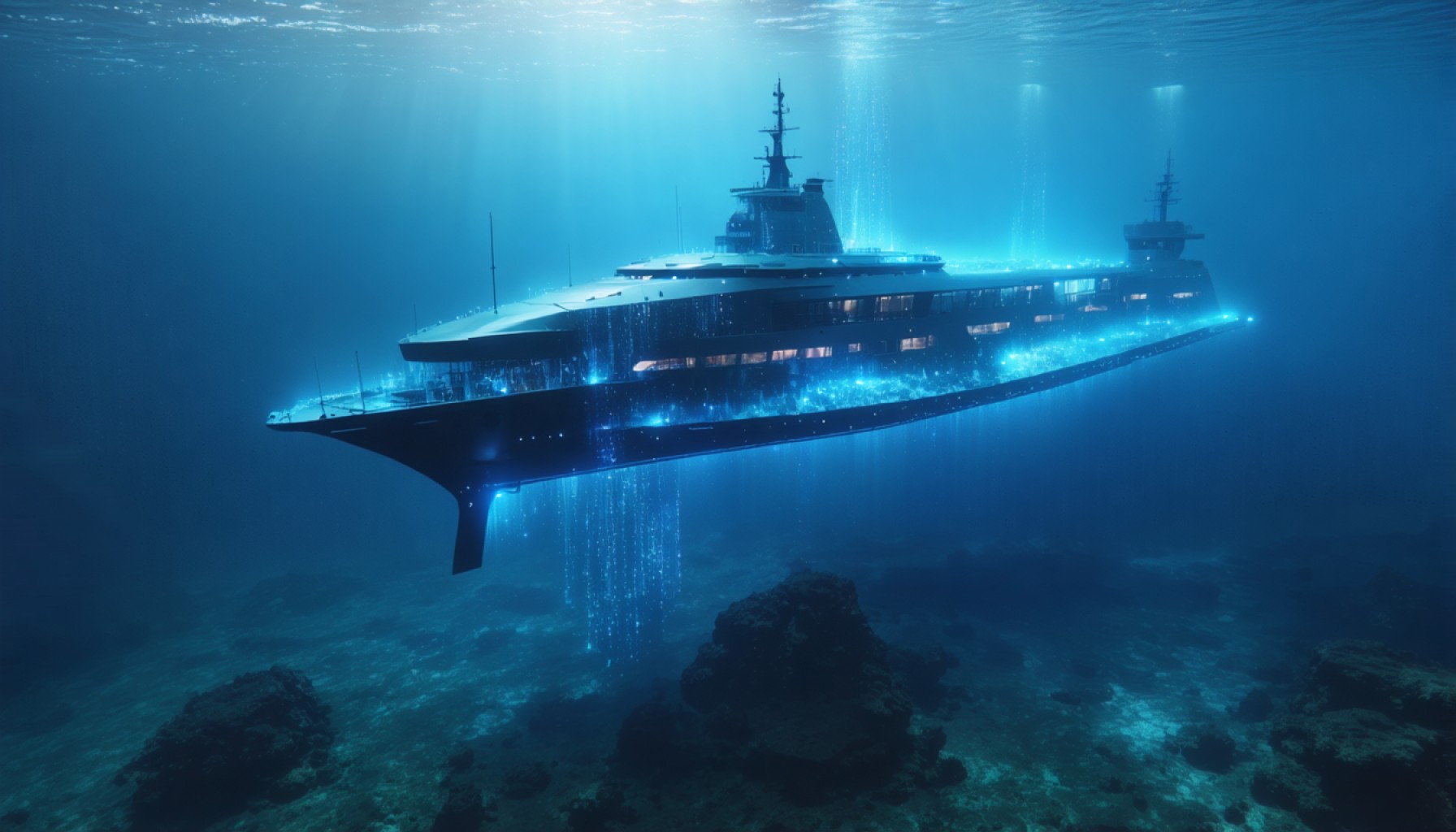- Artificial intelligence is revolutionizing undersea exploration, extending its reach to secure vital ocean infrastructure.
- This technology is reimagining seabed defense, with companies like North.io developing real-time surveillance systems for underwater cables.
- The integration of AI in oceans could lead to significant advancements, akin to drone innovations in modern warfare.
- Challenges persist, including adapting AI for unpredictable underwater threats and reducing regulatory constraints for innovation.
- The debate around technology regulation intensifies, with the ocean symbolizing a frontier for unrestrained innovation.
- The quest for mapping the ocean’s depths underscores the need for adaptable AI training and fewer regulatory barriers.
Beneath the stillness of the ocean’s surface, a technological revolution simmers. Artificial intelligence, a groundbreaking force reshaping industries, now extends its reach to the mysterious depths of our seas. Envision vast networks of unmanned systems patrolling the ocean floor, their sensors pulsating like vigilant eyes in the abyss, tasked with guarding vital undersea infrastructure.
AI is not merely a buzzword but a potent element triggering the fourth industrial revolution, stretching its influence from healthcare and personal assistants to the concealed world beneath the waves. Here, AI’s potential could redefine how we secure the miles of sprawling cables and pipelines that power our digital age, akin to revolutionizing modern warfare with drones.
Among the pioneers, North.io emerges. The company endeavors to change the game of seabed defense by designing innovative systems that promise real-time surveillance of the intricate web of underwater cables. These technologies aim to unveil the ocean’s secrets, crafting a transparent sea—a task akin to taming the wild, untamed depths.
However, the quest for a perfectly mapped ocean remains fraught with challenges. Underwater vehicles grapple with new, unknown threats, highlighting the need for more adaptable and comprehensive AI training. Yet, this endeavor highlights a crucial point—the pursuit of AI-driven innovation demands fewer regulatory shackles to thrive.
As these underwater marvels evolve, so too does the debate on technology regulation. While US tech giants lobby against Europe’s stance, the ocean stands as a metaphor for innovation’s potential unhampered by excessive restraints. Beneath the azure waves, AI’s future dawns vibrant and uncharted, ready for explorers bold enough to navigate its depths.
Unlocking the Ocean’s Secrets: How AI is Revolutionizing Underwater Surveillance
How AI Enhances Underwater Surveillance
Real-World Use Cases:
– Underwater Infrastructure Protection: AI-powered systems can monitor vital underwater cables and pipelines from potential threats such as natural disasters or sabotage. These systems can detect anomalies and alert relevant authorities in real-time, ensuring faster response times.
– Marine Research and Conservation: AI technologies are increasingly used for studying marine life, tracking migration patterns, and monitoring changes in ocean temperatures, which are crucial for understanding climate change effects.
– Resource Exploration: AI enables more efficient and safer methods for exploring underwater resources like oil, gas, and minerals, optimizing extraction processes while minimizing environmental impact.
Market Forecasts & Industry Trends
The underwater AI market is projected to grow substantially over the next decade. According to a report by MarketsAndMarkets, the global AI in the underwater robotics market is expected to reach $3.4 billion by 2026. This growth is fueled by increased demand for underwater exploration and infrastructure protection.
Features, Specs & Pricing
Key Features of AI Underwater Systems:
– Advanced Sensor Technology: Equipped with sonar, cameras, and acoustic sensors, these systems can “see” underwater and gather data continuously.
– Autonomous Navigation: Unmanned underwater vehicles (UUVs) can navigate the ocean depth autonomously, adjusting to environmental changes without human intervention.
– Data Analytics: Sophisticated AI algorithms analyze collected data, identifying patterns, predicting potential threats, and providing actionable insights.
Pricing: Pricing for AI-powered underwater systems varies depending on complexity and capabilities, ranging from a few thousand dollars for basic drones to millions for fully equipped surveillance systems.
Challenges & Limitations
Security Concerns: The reliance on AI for undersea monitoring poses cybersecurity risks, such as the unauthorized access and manipulation of data.
Environmental Impact: The implementation of AI technology underwater may disturb marine life, necessitating eco-friendly designs and operational protocols.
Regulatory Hurdles: Differing international regulations can hinder the deployment and standardization of underwater AI technologies. Progress requires cooperation between nations to manage these shared resources responsibly.
Pros & Cons Overview
Pros:
– Enhances the security of underwater assets.
– Offers valuable data for marine research and resource management.
– Enables real-time monitoring and quick response activities.
Cons:
– High initial costs and maintenance requirements.
– Potential environmental impact and ecological disruption.
– Legal and regulatory complexities.
Actionable Recommendations
1. Invest in Training and Development: Companies looking to employ AI in underwater applications should invest in specialized training programs for staff to ensure effective operation and maintenance of these complex systems.
2. Enhance Collaboration: Encouraging partnerships between technology developers, regulators, and environmental groups can address regulatory and environmental concerns innovatively.
3. Stay Updated on Trends: Businesses should keep abreast of technological advancements and market trends in underwater AI solutions to stay competitive.
4. Prioritize Security: Implement robust cybersecurity measures to protect sensitive data and maintain the integrity of underwater surveillance systems.
Conclusion
As AI ventures into uncharted waters, its potential to transform underwater surveillance and security is immense. Organizations must balance innovation with responsibility, ensuring that technological advancements benefit both human and marine life. For more information on AI innovations, visit North.io for the latest developments in seabed defense technologies.





















